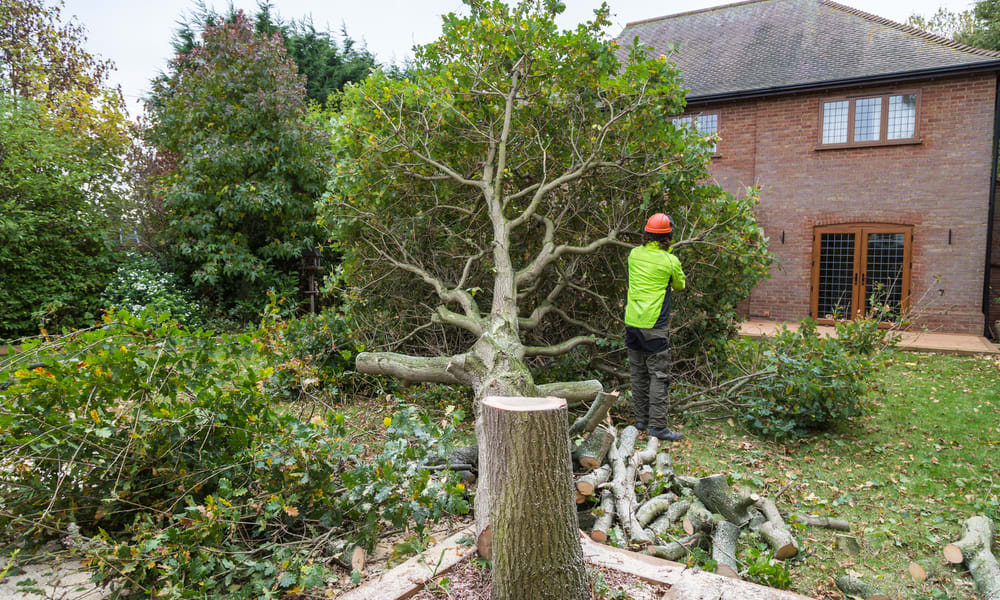Professional Tree Care: Boost Landscape Health & Safety
Investing in professional tree services preserves the beauty, safety, and value of your outdoor spaces. Certified arborists provide pruning, disease management, removals, planting, and more to keep trees healthy and yards safe. Learn how expert tree care prevents damage, enhances curb appeal, and supports long-term landscape health with tailored maintenance plans and timely interventions.

Trees are more than ornamental features — they regulate temperature, support wildlife, and frame the character of a property. Proper care keeps them attractive and safe, but maintaining trees often requires skills and equipment beyond typical homeowner capabilities. Professional tree services deliver targeted solutions that preserve tree health, reduce hazards, and improve the overall function and appearance of gardens and landscapes.
How professional tree work enhances your garden
Skilled tree care transforms both the look and performance of outdoor spaces. Correct pruning shapes trees for stronger growth and a neater silhouette while removing congested or crossing branches. This pruning increases sunlight and airflow through the canopy, benefiting underplantings and reducing disease risk. Arborists can also place new trees strategically to create shade, privacy screens, windbreaks, or visual focal points, adding practical and aesthetic value to the landscape. Thoughtful tree selection and placement enhance energy efficiency by shading buildings and controlling solar exposure throughout the year.
Why choose a certified arborist?
A certified arborist brings specialized knowledge of tree biology, pest and disease identification, and appropriate treatment methods. These professionals can differentiate between treatable conditions and irreversible decline, offering solutions that may save a tree or prevent spread of infection. Certification also indicates training in industry-standard safety and removal techniques, which reduces the chance of property damage or personal injury when dealing with large or hazardous trees. By relying on an expert, homeowners avoid common mistakes — such as improper pruning cuts or ill-advised chemical use — and gain long-term strategies for tree care.
Recommended inspection and maintenance frequency
Regular assessments are key to preventing problems before they escalate. For most properties, an annual inspection by a professional arborist is a sensible baseline. That said, frequency depends on species, age, site conditions, and exposure to storms or pests. Young trees benefit from more frequent visits to guide structural pruning and establish a strong framework. Mature trees typically require major pruning every three to five years, but some species or risk-prone specimens may need closer attention. It’s also a good idea to schedule an inspection after severe weather to check for cracks, root disturbance, or weakened limbs.
What drives the cost of tree services?
Pricing depends on several factors. Tree size and height are primary cost drivers because larger trees require more labor, time, and specialized equipment. Accessibility matters too: trees near structures, power lines, or in confined spaces may demand extra precautions and rigging, increasing complexity. The specific service influences the estimate — routine pruning is generally less expensive than complex removals, cabling, or disease treatments. Tree condition and associated hazards (such as decay or leaning trunks) also affect cost, as addressing riskier situations requires additional expertise and safety measures. Finally, regional labor rates and disposal fees can change the overall price.
| Service | Average Cost Range | Factors Affecting Price |
|---|---|---|
| Tree Pruning | $200 - $800 | Tree size, location, scope of pruning |
| Tree Removal | $400 - $2,000 | Height, access, complexity, proximity to structures |
| Stump Grinding | $100 - $400 | Stump diameter, location, soil/rock conditions |
| Tree Planting | $150 - $300 per tree | Species, root system size, soil prep, planting location |
| Disease Treatment | $50 - $500 | Disease type, tree size, treatment frequency |
Prices are approximate and may vary; verify current rates and obtain multiple quotes before making financial decisions.
Making cost-effective choices and maximizing benefits
When weighing the expense of professional tree care, consider the long-term savings and protections it provides. Preventative pruning and early disease detection can avert costly emergency removals, structural damage, or the loss of multiple trees. A well-maintained canopy contributes to property value by improving curb appeal and creating desirable outdoor living areas. Additionally, correct planting and species selection reduce future maintenance needs and risk exposure.
Investing in scheduled maintenance, timely interventions, and expert consultations helps extend the life of your trees and reduces the likelihood of sudden failures that might harm people or property. For homeowners and property managers, the combination of certified expertise, appropriate equipment, and a proactive care plan offers peace of mind as well as environmental and economic benefits.
Final thoughts
Trees are living investments that reward careful stewardship. Whether you need pruning to restore balance, a professional assessment after a storm, or safe removal of a hazardous specimen, licensed arborists deliver targeted, knowledgeable services. By prioritizing professional tree care, you safeguard your landscape, enhance safety, and protect the long-term value and beauty of your outdoor environment.






